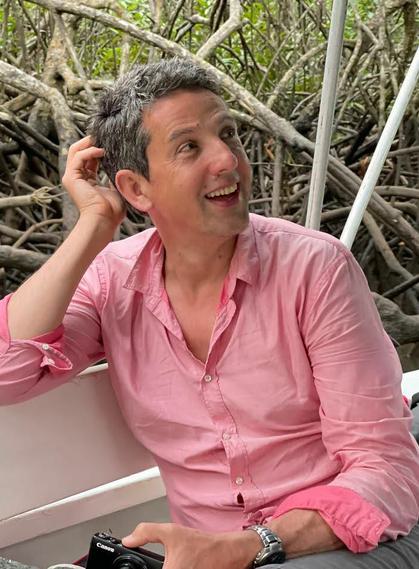 Read Thomas's blog articles
Read Thomas's blog articles
Thomas Power
Co-founder & CEO of Pura Aventura
Thomas has run a café in northern Mexico, lived on a Honduran island, guided tour groups throughout Spain and worked for the UN in Santiago. But it was in the mid-nineties that the seeds for Pura Aventura were sown, through a chance meeting with fellow co-founders in Chile's Torres del Paine and his experiences hitchhiking up through Patagonia along the Carretera Austral. So beautiful were the landscapes through which he passed, and so warm was the hospitality he received, that he decided to start a tour operator primarily dedicated to sharing these special places, no matter how unknown they were at the time.
20 years on, and many more special places later, Pura Aventura is still dedicated to protecting and benefiting their destinations and partners overseas, enabling clients to experience both the ‘bumpy beauty’ and iconic highlights of Spain, Portugal and Latin America.
Pura Aventura has been recommended by The Independent, Wanderlust and Condé Nast for innovative sustainability initiatives, is trusted by BBC Radio 4, The Financial Times & CNN as a voice for certifiably responsible travel, and praised by Which? for commitment to fair and open customer service during the Covid-19 pandemic. Handpicked as the official European launch partner of Patagonia's Route of Parks, the world’s most ambitious conservation tourism project, in 2020 Pura Aventura became one of the first UK travel companies to achieve B Corp certification.
News & views
The Galápagos: how they were formed, how they evolved and why it matters to your visit

Galápagos Islands: where ancient volcanoes and shifting plates shaped a haven for unique wildlife. Here, Thomas shows that a journey around the Galápagos is remarkably varied both in terms of fauna and flora but also geology.
The Galápagos Archipelago consists of 18 main islands, 3 smaller islands, and 107 rocks and islets sitting in glorious isolation some 900km out in the Pacific, straddling the equator.
The islands were formed through a process known as hotspot volcanism. A hotspot is an area where magma from deep within the Earth's mantle rises to the surface, creating volcanic activity. In this case, spewing magma into the sea which then cools and solidifies into landmass. The Galápagos hotspot is believed to have formed around 90 million years ago and it's been going ever since - it's underneath Fernandina Island. That's the round one to the far left of the map, off the west side of the largest island, Isabela.
At this point, plate tectonics come into play. The Nazca oceanic plate is moving slowly south-eastwards, sliding under the South American plate. I picture it as a very slow conveyor belt which drags the lava from the Fernandina hotspot slowly east, snapping off to form new islands from geological time to time.
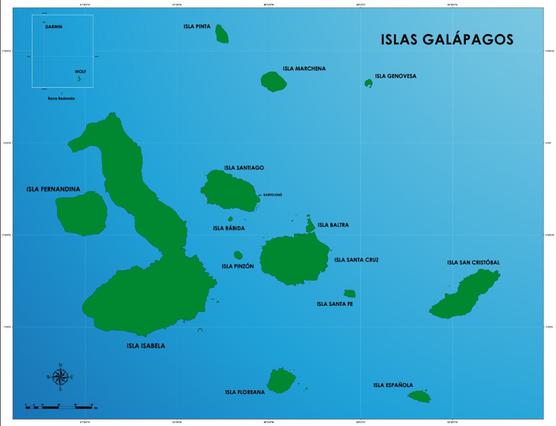
As you look at a map of the Galápagos therefore, the islands to the north-west are the youngest (Fernandina's only about 65,000 years old) and those to the south-east like Española and San Cristóbal among the oldest. In short, you can witness geological time with your own eyes.
How does this relate to the wildlife?
Well...as the plates move and new islands are formed, they take with them their inhabitants allowing them to evolve in isolation. In fact, the geological age of the easternmost islands is less than the evolutionary ages of some of the wildlife so it is thought that we might be looking at Galapagos v2. The original Galapagos islands are now subsumed under the South American plate, on v1 animals started to evolve, gradually shifting off v1 onto v2 islands like walking up the down escalator to avoid sinking under the Andes.
Obviously this is a massive simplification but it does hopefully give you a sense of the fact that a journey around the Galápagos is remarkably varied both in terms of fauna and flora but also geology. It is the very best sort of living classroom.
All of the above does mean that you will want to consider your time on the islands. Staying put in one place (only possible on one of the four inhabited islands: Santa Cruz, San Cristobal, Isabela & Floreana) means that you miss seeing this variety. If you are staying on land rather than travelling by live aboard boat, you should certainly consider combining at least two different islands, ideally three, for instance flying into Santa Cruz (the big round one in the middle) then heading over to Isabela to the west and then all the way back to San Cristobal in the east. Those inter island connections can be done by taxi boat type services though distances are not insignificant - a couple of hours at least per sector.
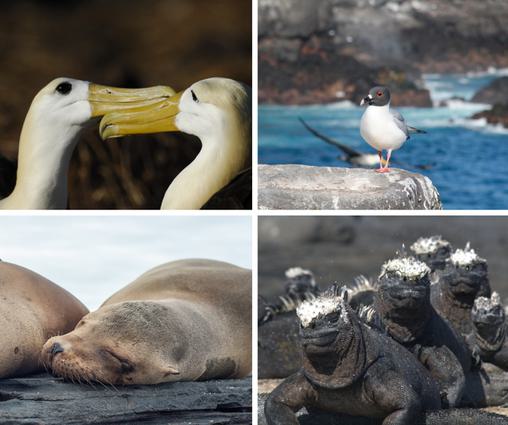
In order to get further from humans, you will need to choose a live ab6-oard boat. Really this is where you will see the very best of the Galápagos. However, not all itineraries/routes are created equal. The National Park authority strictly controls permits for the visitor sites in the islands. There are around 90 live aboard boats permitted to operate in the archipelago. If we focus in on the smaller boats of around 16-20 passengers, you are looking at around half that number. The way these boats operate is that you head out on a prescribed route around the islands, stopping off morning and afternoon at a different visitor site. To reduce impact, boats are only allowed to visit a given location once every two weeks. This tends to mean that all boats operate a set week A and a set week B. Some further sub-divide into three and four night jaunts but for simplicity, think in terms of alternating weeks.
It's remarkably common for there to be a material difference between the two weeks - one following a more north-south route while the other is more east-west. For the reasons set out above, you're going to tend to see more if you explore along an east-west axis than if you go north-south.
So, picking the right boat, doing the right route, at the right time of year is something of a skill. One I'm delighted to say we possess at Pura so why not get in touch and we can get to work.
By the way, if you are looking for the best possible experience in the islands, we love it if you can do a week on board going all the way east-west and then ending with a few nights on land staying on San Cristobal island. It's much less populous than Santa Cruz, retains much of its charm and is an incredible place to just watch humans and animals co-existing in a way you really see nowhere else on the planet.
Ultimate Galápagos Holiday: 7-Night Cruise and Island Stay
Ultimate Galápagos Holiday: 10-Night Cruise & Island Stay
Ecuador & Galápagos Wildlife Wonders
Machu Picchu, Quito & the Galapagos
"Trip of a lifetime. Thank you Pura Aventura"
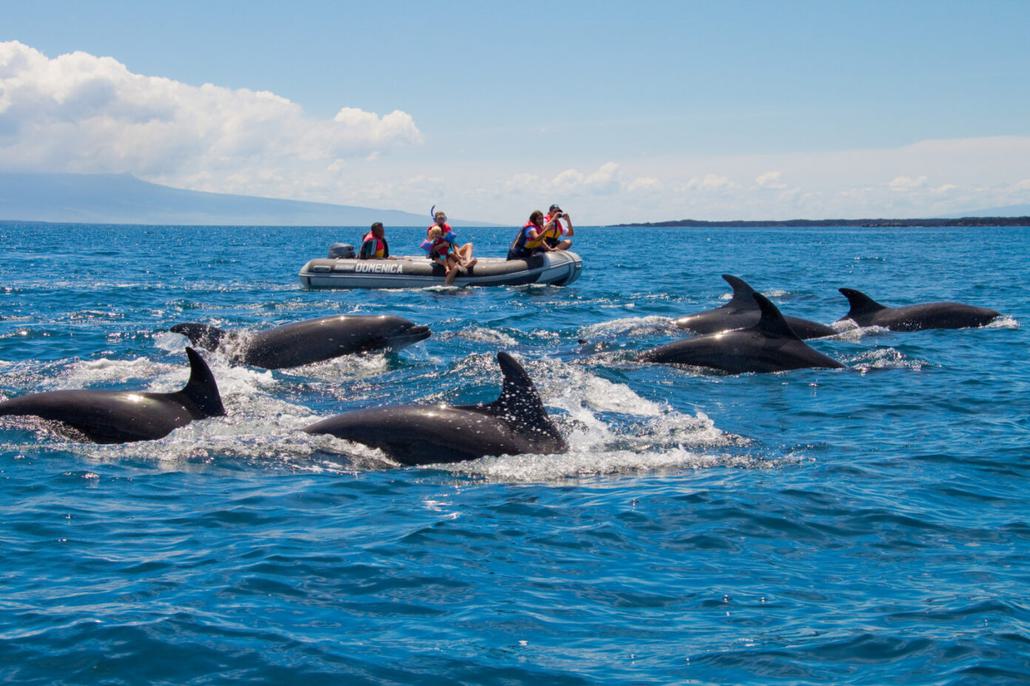
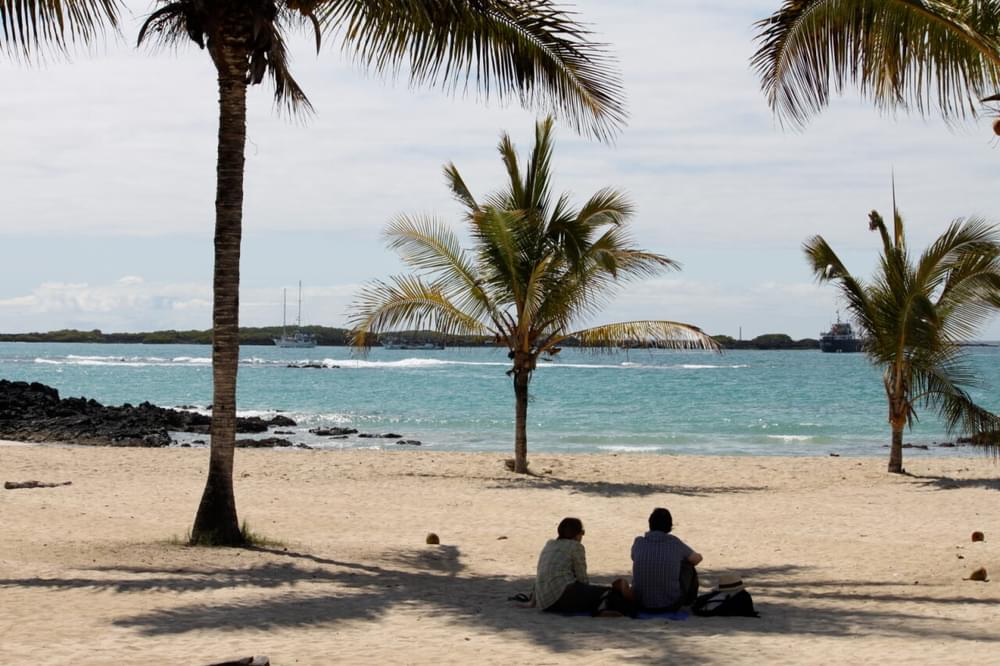
“An extraordinary week in the Galapagos, with an expert naturalist, with snorkeling, island walks, cruising with 100s of dolphins. And, again, wonderful service throughout, enjoyed by a lovely group of fellow travelers. Beautiful experience.”

Ecuador & Galápagos Wildlife Wonders Vacation
-
$11,850 pp
- 17 days
3 Extra Cruise Nights for Free!
Ecuador & Galápagos Wildlife Wonders Vacation

When: Mar-Jan
Price: £7,990 per person
Duration: 17 days
Small-scale lodges immersed in tropical forests; a small-ship cruise in the Galápagos. Ecuador's wildlife wonders, up close, in comfort and with experts.

Our Ultimate Galápagos Vacation: 10-Night Cruise & Island Stay
-
$12,215 pp
- 16 days
Our Ultimate Galápagos Vacation: 10-Night Cruise & Island Stay

When: Anytime
Price: $11,459 per person
Duration: 16 days
If you only come to the Galápagos once, let's make it count. A small-ship cruise brings you closer to the wildlife, time on dry land lets you explore as you wish.

Our Ultimate Galápagos Vacation: 7-Night Cruise & Island Stay
-
$11,530 pp
- 13 days
Our Ultimate Galápagos Vacation: 7-Night Cruise & Island Stay

When: Anytime
Price: $11,459 per person
Duration: 16 days
If you only come to the Galápagos once, let's make it count. A small-ship cruise brings you closer to the wildlife, time on dry land lets you explore as you wish.





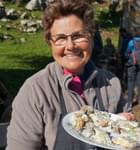
 By
By 
